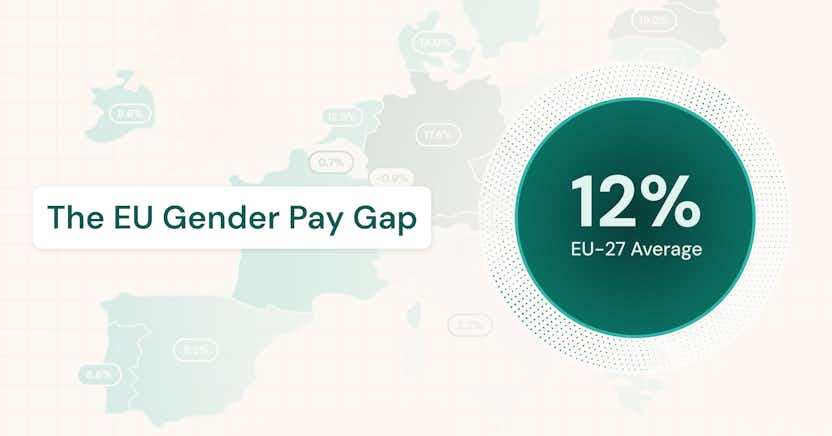What Is Pay Equity Analysis?
Pay equity analysis is a systematic evaluation of compensation data aimed at identifying and addressing unjustified differences in pay among employees performing comparable work. Typically, the analysis focuses on disparities related to gender, race, ethnicity, or other protected characteristics, though it may also include factors such as disability status, age, or nationality depending on the legal and cultural context.
The goal of pay equity analysis is to detect pay gaps that cannot be explained by legitimate job-related factors—such as experience, education, role level, or performance—and to support corrective action where inequities exist. The process is often embedded in broader compensation management and diversity, equity, and inclusion (DEI) strategies, helping organizations meet regulatory requirements, manage risk, and uphold fairness in how people are valued and rewarded.
Why is pay equity analysis important?
Pay equity analysis plays a critical role in promoting fair compensation practices. In an era of heightened regulatory scrutiny and stakeholder expectations, organizations must be able to demonstrate that their pay structures are equitable and free from systemic bias.
The analysis serves several important purposes:
- It identifies gaps that may point to unconscious bias, structural inequality, or legacy practices that need to be updated.
- It provides a factual basis for making pay adjustments and setting future compensation policies.
- It supports legal compliance with equal pay and anti-discrimination laws in various jurisdictions.
- It builds trust with employees and external stakeholders by promoting pay transparency and accountability.
In both the United States and Europe, pay equity has become a focal point of public policy. The EU Pay Transparency Directive requires large employers to report pay gaps and conduct joint pay assessments, while in the U.S., states like California and New York mandate pay data reporting and salary range disclosures. Pay equity analysis helps organizations meet these obligations and prepare for evolving standards.
What are the core components of pay equity analysis?
Effective pay equity analysis involves a series of structured steps that enable organizations to detect, understand, and address pay disparities. While methodologies may vary, several elements are commonly included.
A typical pay equity analysis includes:
- Job classification and comparability assessment, which ensures that similar roles are grouped appropriately for analysis.
- Data collection and normalization, including employee compensation, job level, performance ratings, tenure, and other legitimate pay factors.
- Regression analysis or statistical modeling, to determine the extent to which demographic characteristics predict pay differences after accounting for job-related variables.
- Outlier identification, which highlights individual or group-level disparities that may require deeper investigation.
- Remediation planning, including recommendations for pay adjustments and process improvements.
Organizations may conduct these steps internally or with the assistance of third-party consultants or software platforms. Increasingly, compensation management technology supports integrated workflows for conducting, documenting, and tracking equity analyses.
Why must organizations monitor pay equity proactively?
Reactive or one-time reviews are no longer sufficient in a landscape shaped by pay transparency expectations and reputational risk. Organizations that fail to address inequities in compensation may face challenges such as:
- Declining employee engagement and increased turnover among underpaid groups.
- Regulatory penalties or legal claims under equal pay laws.
- Shareholder demands for greater disclosure on human capital metrics.
- Damage to employer brand and reputation.
- Loss of competitive standing in talent markets where fairness and inclusion are valued.
Proactive pay equity analysis enables companies to spot trends before they escalate, to align pay with values and performance, and to embed fairness into compensation decision-making processes. It also facilitates scenario modeling during compensation planning cycles, helping HR and finance teams understand the cost and impact of different adjustment strategies.
Who benefits from pay equity analysis?
Pay equity analysis creates value for a wide range of stakeholders:
- Employees benefit from assurance that they are being paid fairly relative to peers, enhancing motivation and trust.
- Managers and HR professionals gain tools to make equitable compensation decisions and reduce bias in pay-setting.
- Executives and boards reduce organizational risk and support ESG reporting goals.
- Regulators and policymakers benefit from improved employer compliance and data quality.
- Investors and customers increasingly expect transparency around pay equity as part of a company’s broader sustainability and governance practices.
By fostering transparency and accountability, pay equity analysis contributes to a more inclusive and high-performing workplace culture.
How do pay equity analysis compare to pay gap reporting?
While often used interchangeably, pay equity analysis and pay gap reporting are distinct activities.
- Pay gap reporting provides a high-level view of average or median pay differences between groups (such as women versus men), without controlling for other variables.
- Pay equity analysis digs deeper to assess whether individuals are being paid fairly for equivalent work, controlling for legitimate job-related factors.
An organization may have a small adjusted pay gap but still report a wide overall gender pay gap due to structural representation issues. Therefore, both types of analysis are valuable and complementary. Pay gap reporting highlights disparities in workforce composition, while pay equity analysis focuses on fairness in pay practices.
How can you evaluate the quality of a pay equity analysis?
A high-quality pay equity analysis is not only statistically sound but also operationally actionable. To evaluate the effectiveness of an analysis, organizations should consider:
- Data integrity: Is the underlying employee data accurate, complete, and up to date?
- Job comparability: Are roles appropriately grouped to ensure meaningful comparisons?
- Analytical rigor: Are appropriate statistical methods used to control for legitimate pay factors?
- Transparency: Are results clearly communicated to stakeholders in a way that fosters understanding and accountability?
- Follow-through: Are identified gaps addressed through targeted pay adjustments and systemic process changes?
Tools that allow for scenario testing, audit trails, and longitudinal tracking are especially useful in building confidence in the process.
What are best practices for conducting pay equity analysis?
Organizations looking to implement or improve their pay equity analysis should follow a set of best practices that reflect both legal obligations and ethical standards. These include:
- Establishing a governance framework, including clear roles for HR, compensation, legal, and DEI teams.
- Conducting regular, periodic reviews, ideally aligned with compensation planning cycles.
- Using consistent, validated criteria for grouping comparable jobs.
- Controlling for relevant pay factors such as tenure, location, or certifications, while avoiding variables that may correlate with bias.
- Documenting all assumptions and decisions, including the rationale for any adjustments made.
- Communicating findings and next steps transparently to leadership and employees.
Technology can support these practices by automating data pulls, standardizing analysis procedures, and enabling collaborative review across departments.
Frequently asked questions (FAQs) about pay equity analysis
- Is pay equity analysis required by law?
In some jurisdictions, yes. The EU Pay Transparency Directive, for example, mandates pay assessments for certain employers. In the U.S., pay transparency laws vary from state to state. Even when not mandated, analysis is increasingly expected by regulators and stakeholders. - How often should you conduct pay equity analysis?
At least once a year, and ideally in advance of major compensation decisions such as merit cycles, promotions, or job reclassifications. - What’s the difference between internal and external pay equity?
Internal pay equity focuses on fairness within the organization. External pay equity relates to market competitiveness across companies for similar roles. - Can technology help with pay equity analysis?
Yes. Compensation platforms like beqom can streamline data collection, support advanced analytics, and enable ongoing monitoring of equity metrics. - Does pay equity analysis only apply to gender?
No. While gender is a common focus, robust analyses also consider race, ethnicity, age, disability, and other characteristics depending on context and data availability. - What happens after inequities are found?
Organizations typically develop remediation plans, including targeted pay adjustments and changes to pay-setting processes to prevent recurrence. These adjustments may be integrated into the standard performance and salary review process.
Summary
Pay equity analysis is a critical process for ensuring that employees are paid fairly for comparable work, regardless of personal characteristics. As expectations around transparency and fairness grow, organizations must move beyond static reporting and adopt proactive, data-driven approaches. By embedding pay equity analysis into compensation strategy and leveraging technology to support it, employers can meet legal obligations, promote inclusion, and build a more resilient and engaged workforce.






